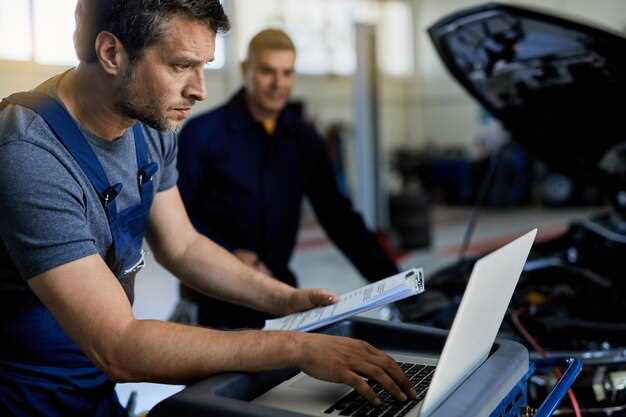VW ECU Remapping – What You Need to Know

In the realm of automotive performance, remapping the ECU (Engine Control Unit) of your VW vehicle is a popular method to enhance power and efficiency. The process involves modifying the factory settings to optimize engine parameters, offering added benefits without the need for invasive modifications. Understanding the intricacies of VW remapping can empower you to make informed decisions regarding your vehicle’s performance enhancements.
One of the primary reasons car enthusiasts choose to remap their VW ECU is to achieve a significant boost in horsepower and torque. By adjusting fuel delivery, ignition timing, and boost levels, a properly executed remap can unlock the potential hidden within the engine’s original configuration. However, it is vital to approach this process with caution and awareness, as improper remapping can lead to detrimental effects on engine reliability and longevity.
This guide will delve into essential tips and crucial information regarding VW ECU remapping, from the advantages it offers to the potential risks involved. Whether you’re a seasoned car aficionado or a novice looking to explore performance upgrades, understanding the fundamentals of ECU remapping will help you make the best choices for your VW vehicle.
VW ECU Remapping Guide: Tips and Key Information
When it comes to enhancing the performance of your VW, remapping the Engine Control Unit (ECU) is one of the most effective modifications. A successful remap can lead to increased horsepower, improved torque, and better fuel efficiency. Here are essential tips and key information to consider before proceeding with a VW ECU remap.
Firstly, it is crucial to choose a reputable tuning company or specialist. Look for one with experience in VW models and positive customer reviews. A professional will ensure that the remap is tailored specifically to your vehicle’s engine, optimizing its performance safely.
Secondly, understand your vehicle’s current specifications and performance goals. Whether you’re aiming for a mild power increase for daily driving or a more aggressive tune for track use, knowing your objectives will guide the remapping process. Be realistic about the gains you can expect and communicate these with your tuner.
Software compatibility is another critical factor. Ensure that the tuning software used is suitable for your specific VW model. Different engines and ECUs have unique requirements, and using the wrong software can lead to performance issues or even damage your engine.
Additionally, consider the potential need for supporting modifications. While a remap can significantly enhance performance, pairing it with upgrades such as a better exhaust system or improved intake can maximize gains. Discuss these options with your tuner to find the best combination for your vehicle.
Lastly, remember to monitor your car’s performance after the remap. Pay attention to how the vehicle responds, any changes in fuel consumption, and the overall driving experience. Regularly check for error codes and maintain your vehicle properly to ensure that the remap continues to deliver optimal performance.
In summary, a VW ECU remap can transform your driving experience, but it’s essential to approach the process carefully. By choosing the right specialist, understanding your goals, ensuring software compatibility, considering supporting modifications, and monitoring performance, you can enjoy the full benefits of your remapped VW.
Understanding VW ECU Components and Functions

The Engine Control Unit (ECU) is a crucial component in Volkswagen vehicles that plays a significant role in vehicle performance and efficiency. Understanding its components and functions is essential for anyone considering an ECU remap.
The primary functions of the VW ECU include:
- Engine Management: The ECU controls various engine parameters such as fuel injection, ignition timing, and air-fuel mixture to optimize engine performance.
- Emissions Control: The ECU regulates emissions output to comply with environmental standards, adjusting parameters to maintain optimal levels.
- Diagnostics: It monitors engine performance and can identify issues through diagnostic trouble codes (DTCs), aiding in troubleshooting.
- Adaptive Learning: The ECU can learn and adapt to different driving styles, optimizing performance based on the driver’s habits.
Key components within the VW ECU include:
- Microcontroller: The brain of the ECU, responsible for processing data and executing commands.
- Sensors: Various sensors collect data on engine temperature, airflow, and throttle position to inform the ECU’s decisions.
- Actuators: These components carry out the ECU’s commands by adjusting fuel delivery, timing, and other crucial functions.
- Memory: The ECU consists of both volatile and non-volatile memory, storing parameter maps, calibration data, and error codes.
When considering an ECU remap, it is essential to evaluate how modifications to these components will affect overall performance. Remapping alters the data within the ECU to enhance power output and efficiency, making understanding its functions vital for optimal results.
In conclusion, familiarizing yourself with the functions and components of the VW ECU is imperative before undertaking any remapping efforts. A thorough understanding will not only enhance performance but also ensure reliability and longevity of the vehicle.
Step-by-Step Process for Remapping VW ECUs

Step 1: Research
Before you initiate the remapping process, it’s crucial to research the specific VW model and its factory ECU settings. Understanding the vehicle’s engine specifications, performance limits, and common issues will guide your remapping strategy.
Step 2: Gather Required Tools
You will need a reliable OBD-II interface, a laptop with compatible software, and access to factory ECU tuning files. Ensure all tools are compatible with your specific VW model to avoid any complications.
Step 3: Connect the OBD-II Interface
Plug the OBD-II interface into the vehicle’s diagnostic port, typically located under the dashboard. Ensure a secure connection to communicate effectively with the ECU.
Step 4: Backup Original ECU Data
Using your tuning software, read and backup the original ECU data. This step is vital for restoring settings if needed or for troubleshooting any issues that may arise after the remap.
Step 5: Analyze and Modify the ECU Map
With the original data secured, analyze the mapping files. Identify areas for improvement, such as fuel injection timing, boost pressure, and throttle response. Make necessary adjustments based on your performance objectives.
Step 6: Upload Modified Map to the ECU
Once modifications are complete, upload the new map back to the ECU. Monitor the process closely to ensure no error codes arise during the upload phase.
Step 7: Test Drive and Monitor Performance
After remapping, take the vehicle for a test drive. Monitor the ECU’s performance, looking for any irregularities or warning indicators. Pay attention to throttle response and overall engine behavior.
Step 8: Fine-tuning
If necessary, revisit the mappings based on your test drive findings. Fine-tune parameters for optimal performance until you achieve your desired results.
Step 9: Document Changes
Maintain a detailed record of all modifications made to the ECU. Documenting changes will assist in future upgrades or troubleshooting and provide insights into how tuning affects performance.
Step 10: Regular Maintenance
After remapping, keep up with regular vehicle maintenance. Monitoring engine health and performance will help ensure that the ECU operates efficiently and reliably.
Common Issues and Troubleshooting After Remapping
After completing an ECU remap on your VW, various issues may arise that can affect the vehicle’s performance. Understanding these common problems will help you troubleshoot effectively.
One frequent issue is engine misfires. This can occur if the remap alters the fuel-air mixture too aggressively. To address this, ensure that the air intake and exhaust systems are functioning optimally, and check for any pending fault codes using a diagnostic tool.
Another potential problem is diminished fuel efficiency. If the remap favors performance over economy, you may notice increased fuel consumption. Reassessing the remap parameters or switching to a more balanced map can help rectify this.
Turbo lag can also become pronounced after a remap. If the turbocharger takes longer to spool up, it may be necessary to revisit the tuning settings to find a more responsive balance between power gain and throttle response.
Overheating is a critical concern post-remap. Enhanced power outputs can lead to increased engine temperatures. Monitor the cooling system and consider upgrading components such as the intercooler or oil cooler if overheating becomes a frequent issue.
Check engine lights may illuminate due to the remap affecting various sensors. Using an OBD-II scanner can identify specific codes that will guide your troubleshooting efforts. Some codes may be triggered by more aggressive mapping settings, and reverting to a factory-like setting can eliminate these warnings.
Lastly, watch for abnormal vibrations or noises from the engine. These symptoms could indicate mechanical issues exacerbated by increased power. Inspect engine mount conditions and consult a professional if persistent problems arise.



